start building an influence culture
LUNCH AND LEARN SERIESFascinate your staff and grow an ethical persuasion culture in your organisation with an entertaining series of ‘Lunch and Learn’ events on the Principles of Influence and more.
HOW CAN WE BEST ASSIST YOUR BUSINESS
Book a free STRATEGY Call
LUNCH AND LEARN INFLUENCE PRESENTATIONS
EYE-OPENING QUICK TO IMPLEMENT LESSONS IN ETHICAL PERSUASION
The persuasion effectiveness of your team members makes, breaks, or keeps a business in mediocrity. With a regular dose of scientifically backed Ethical Persuasion insights, you can empower your team to implement these truths, keep them excited about their achievements and start building an influence culture within the team.
LUNCH and LEARN SERIES
There are seven Principles of Influence: Reciprocity, Liking, Scarcity, Authority, Commitment & Consistency, Social Proof, and recently discovered principle of Unity. Then there is the Human Decision-Making and the very powerful amplifier—Contrast. Each of these topics is treated separately in a ‘Lunch and Learn’ presentation of about 30 min, which fits nicely into lunch breaks.
Use the Lunch and Learn events to inspire the team, build an appreciation for the science behind human decision-making and determine who may be selected for more in-depth training and coaching.
LUNCH AND LEARN INFLUENCE PRESENTATIONS
EYE-OPENING QUICK TO IMPLEMENT LESSONS IN ETHICAL PERSUASION
The persuasion effectiveness of your team members makes, breaks, or keeps a business in mediocrity. With a regular dose of scientifically backed Ethical Persuasion insights, you can empower your team to implement these truths, keep them excited about their achievements and start building an influence culture within the team.
LUNCH and LEARN SERIES
There are seven Principles of Influence: Reciprocity, Liking, Scarcity, Authority, Commitment & Consistency, Social Proof, and recently discovered principle of Unity. Then there is the Human Decision-Making and the very powerful amplifier—Contrast. Each of these topics is treated separately in a ‘Lunch and Learn’ presentation of about 30 min, which fits nicely into lunch breaks.
Use the Lunch and Learn events to inspire the team, build an appreciation for the science behind human decision-making and determine who may be selected for more in-depth training and coaching.
STOP DOING WITHOUT BEHAVIOURAL SCIENCE
Which influence business processes are likely to be underperforming?
Persuasion is a skill that plays an important role in many processes within an organisation. It is more than just salespeople and advertising where persuasion plays an important role. Building an Ethical Influence Culture throughout your team will bear fruit by reaching more goals in any department, including
Retail Sales
Wholesale Sales
Hiring / HR
Employee Onboarding
Loyalty programs
Communication Specialists
Advertising
Online Marketing
Leadership
Negotiations
Speaking / Interviews
Customer Service Interactions
Staff motivation
Accounts receivable
Social Media Engagement
USING DR CIALDINI'S PRINCIPLES
Trusted By Leading Enterprises Around The World




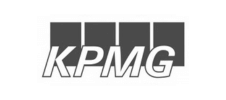
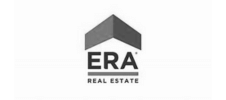

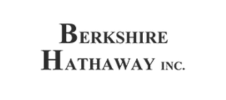


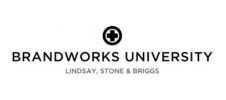
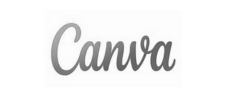
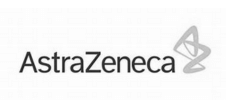
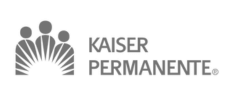
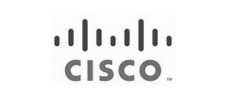

Read many testimonials
PRINCIPLES OF INFLUENCE
What are the Principles of Influence as taught by Dr Cialdini?
The Principles of Influence, like powerful engines of persuasion, operate most effectively when used ethically. They serve as mental shortcuts, facilitating quicker and easier decision-making. As ethical influence practitioners, if we actively seek to identify and reveal these principles in every communication, we can significantly enhance our success in guiding others towards decisions that serve their best interests.
Let's explain the Principles of Influence briefly:
Reciprocity
People feel a sense of obligation to those who first gave them a positive behaviour.
LIKING
People like those who are like them and those who like them. We agree more with people who we like.
UNITY
People form special links with others when they are part of a group.
Consistency
There is a preference for people to be consistent with past actions and statements.
Scarcity
We want more of what is scarce, rare or when the availability is uncertain.
authority
People follow the lead of experts.
SoCIAL PROOF
People follow the lead of others, especially when they are numerous and similar to them.
Corporate influence results examples
How many of these type of opportunities are wasted in your organisation on a daily basis?

Open the additional influence results exampls by clicking the icon on the right of the titles
When was the last time you realised you were only making a sixth of the sales you could have made?
Her is an example of the power of the right influence approach:
A company that had been selling train car loads of Australian beef to international purchasers participated in an influence experiment directly based on Dr Cialdini's teachings.
The normal sales appeal was 'We have certain alotment of beef. It is of 'such and such' quality. How many train loads of beef would you like?' - Under this appraoch typically 10 train car loads were purchased.
When (and this was true), their standard appeal was preceded by 'Due to certain weather conditions in Australia there is likely to be a sortage of Australian beef in the near future.' followed by the standard appeal. - Under these instructions 24 car loads were ordered.
But... you would have guessed something like this would happen. We have an intuitive feel for what 'scarcity' does to us and other people. What you might not have expected was what happened to the third group...
The third section of cliets were told 'Due to certain weather conditions in Australia there is likely to be a sortage of Australian beef in the near future.' and they then (truthfully) added: 'and we should tell you that this information has come to us from our exclusive sources at the Australian National Weather service... no one else has this information.'
Now, not only the beef was scares but also the information that the beef was scares, was scares. Under these instructions, on average 61 car loads were purchased.
The company realised immidiately that these sort of situations had existed multiple times in the past, but they had never be able to capitalise on an ethical approach that could have increased their sales SIX FOLD. They lost this benefit every time in the past.
What hidden gems exist in the way you do business that we could uncover? Even if your staff read Dr Cialdini's book, can you afford to rely on their own abilities to identify opportunities like this consistently? Or should you formalise some training to create a well-trained influence culture in your team?
Change in the order of product presentations and the 520% sales increase on the top-of-the-line model
A company selling spa baths needed some assistance with its sales. The staff were used to showing potential buyers the cheapest spa bath first, explaining the features and the price, before moving on to the spa bath one step more costly. They would do the same at each spa bath as they went up the line and ended up showing the top-of-the-line spa (which came with a gazebo over the top of it and other fancy features).
When it came to the features or benefits that one particular model had more than the cheaper model discussed previously, they would explain how the buyer would enjoy these additional features like jets, lights, seats, built-in hi-fi equipment and so on.
The first change they made was to start presenting the spa bath from the top down instead. They showed the top-of-the-line spa bath with the gazebo enclosure included, the most water jets, and luxurious options. After this, the lesser models were shown. Instead of presenting the added features of a more costly model, they now highlighted what the client would be missing out on, in terms of features, if they purchased this lower-priced model.
By making this change, the average sale went up significantly. Buyers often placed themselves in the middle of the range instead of the lower end.
However, sales of the top-of-the-line model with the gazebo had mostly stayed the same. Salespeople commented to the consultant that people who bought this top-of-the-line model were always delighted. Because of the gazebo, many treated it as if they had added another room to their house.
The consultant then proposed that they could compare this top-of-the-line model to the cost of adding a room to your house. Adding a room to a house is a costly undertaking and likely would set back anyone at least tens of thousands of dollars.
By comparing the top-of-the-line model to adding a room to a house, sales of that model went up by about 400%!
What hidden but truthful comparisons could you make when presenting your proposal?
More or less people to promote an early lunch in the food court?
Researchers found something interesting when displaying posts near a shopping mall food court to remind and prompt people to consider having an early lunch.
One poster tested had a photo of one person having an early lunch and another poster had a photo of several people enjoying an early lunch.
The poster featuring a single person was remarkably successful. Its presence led to a 25% surge in lunch purchases before noon, much to the satisfaction of food court operators. This approach had effectively spread out their busy period.
The second poster showed multiple people and performed even better. 75% more lunches had been purchased before noon.
Would you have thought such a simple change would make such a significant difference? Are you sure you are optimally using the psychological trigger that underpins this reaction in your communications?
How McDonalds increased its McFlurry desert sales
Many McDonalds restaurants offer a McFlurry desert. In one set of McDonald's restaurants, visitors were asked if they wanted a dessert and told that the McFlurry was the favourite amongst restaurant visitors.
McFlurry sales jumped 55%
Then, when someone did indeed order a McFlurry, they were told that X McFlurry topping was the favourite topping at this restaurant. Customer purchases of topping increased by an additional 48%
Of course, there is a perfectly logical psychological trigger behind this approach, but do you know it? Even if you do know it, are you consistently successfully using it and the other principles in your business?
Realise this was a profitable change for no added expense and how many sales had been wasted by not knowing/using the science in all the years leading up to this change!
Can you afford not to have all of your team well-trained and capable in skill so they identify opportunities like this consistently?
These examples is certainly not alone but clearly serve as an example of past events only. No promises can be made about what level of provements that may be achieved
DO SOMETHING COST EFFECTIVE AND BENEFICIAL FOR YOUR TEAM
Contact us today about organising ‘Lunch and Learn’ presentations in your organisation

We look forward to working with you and your team to build optimised performance through ethical persuasion training.
If you like, send us a message now with where you are located and how many people you imagine attending the Lunch and Learns. We will work out the details for you.
Alternatively, book a strategy call and let’s have a chat.












